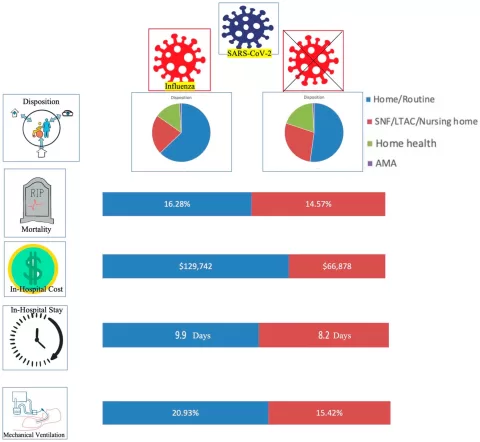Black flying foxes (Pteropus alecto), known for their impressive wingspan and vital role in the ecosystem, are emerging as significant reservoirs of Borrelia bacteria. Recent studies have revealed that these magnificent bats may harbor two distinct haplotypes of Borrelia, which are not directly associated with Lyme borreliosis or typical relapsing fever strains. Given their zoonotic potential, understanding the role of black flying foxes in the transmission of Borrelia is crucial for public health and wildlife management. With Borrelia bacteria being responsible for diseases such as Lyme borreliosis and relapsing fever, ongoing research into the links between flying foxes and these pathogens can provide insights into mitigating health risks. As we delve deeper into the world of these flying fox reservoirs, the significance of their interactions with Borrelia becomes increasingly clear.
The intriguing relationship between Pteropus alecto and Borrelia presents an evolving narrative in wildlife epidemiology. Often referred to as fruit bats or flying foxes, these animals are not only crucial for pollination and seed dispersal but also serve as potential carriers for various pathogens, including Borrelia species. Studies into their role as epidemiological reservoirs have uncovered the presence of unique Borrelia haplotypes, expanding our understanding of these complex bacterial hosts. Furthermore, the zoonotic implications of Borrelia infections underscore the importance of monitoring bat populations closely, considering their potential to transmit diseases like Lyme borreliosis and other tick-borne illnesses. Investigating the ecological dynamics at play allows for better disease prevention strategies and highlights the need for continued research into these fascinating mammals.
Understanding Black Flying Foxes (Pteropus alecto) as Borrelia Reservoirs
Black flying foxes, scientifically known as Pteropus alecto, play a significant role in our understanding of zoonotic diseases due to their potential as reservoirs of Borrelia bacteria. These bats, widespread across Australia, have been found harboring distinct haplotypes of Borrelia which are not associated with well-known strains like those responsible for Lyme borreliosis. As wildlife researchers continue to investigate the complex ecology of these bats, the focus on their role in transferring Borrelia to other species – including humans – becomes increasingly pertinent.
The findings from research involving black flying foxes highlight the need for intensive ecological studies to understand the Borrelia lineages they host. Although Borrelia species are typically associated with ticks, this study suggests that bats like black flying foxes also harbor unique strains that could impact public health. This raises important questions regarding the interactions within ecosystems, particularly as these bats may influence the dispersal and maintenance of Borrelia bacteria in the wild, thereby complicating disease transmission dynamics.
Frequently Asked Questions
What role do black flying foxes (Pteropus alecto) play in the transmission of Borrelia bacteria?
Black flying foxes, or Pteropus alecto, have been identified as reservoirs for Borrelia bacteria, including distinct haplotypes that differ from the well-known Lyme borreliosis and relapsing fever clades. This suggests they may contribute to the ecology and spread of Borrelia, highlighting the need for further research into their zoonotic potential.
Can black flying foxes (Pteropus alecto) transmit Lyme borreliosis or other diseases caused by Borrelia bacteria?
While black flying foxes (Pteropus alecto) harbor specific lineages of Borrelia bacteria, these haplotypes are phylogenetically distinct from those that cause Lyme borreliosis. Further studies are required to understand their zoonotic potential and whether these bats could transmit Borrelia to humans or other animals.
What is the zoonotic potential of Borrelia bacteria found in black flying foxes?
The zoonotic potential of the Borrelia bacteria found in black flying foxes (Pteropus alecto) remains unclear. Current research indicates these bats harbor unique Borrelia strains, and investigating their ectoparasites may shed light on transmission pathways and risks to human health.
How prevalent is Borrelia bacteria in black flying foxes (Pteropus alecto) in Australia?
In a recent study, 2% of black flying foxes (Pteropus alecto) sampled in Australia tested positive for Borrelia bacteria. While this prevalence is relatively low, it underscores the importance of ongoing research to monitor these bats as potential sources of Borrelia infections.
What techniques were used to identify Borrelia bacteria in black flying foxes (Pteropus alecto)?
To identify Borrelia bacteria in black flying foxes (Pteropus alecto), researchers used Polymerase Chain Reaction (PCR) techniques targeting the 16S rRNA and flagellin genes. This molecular approach allowed for the detection and characterization of different Borrelia haplotypes present in the bats.
Why is it important to study black flying foxes (Pteropus alecto) in relation to Borrelia bacteria?
Studying black flying foxes (Pteropus alecto) in relation to Borrelia bacteria is crucial for understanding their role as potential reservoirs in the transmission of zoonotic diseases, the evolution of Borrelia lineages, and the broader implications for public health regarding Lyme borreliosis and relapsing fever.
What further research is needed regarding black flying foxes (Pteropus alecto) and their Borrelia infections?
Further research is needed to sample more black flying foxes (Pteropus alecto) and their ectoparasites across different regions. This will help clarify the zoonotic potential of the novel Borrelia lineages found in these bats and identify any associated arthropod vectors.
| Key Points |
|---|
| Black flying foxes (Pteropus alecto) are potential reservoirs for Borrelia bacteria in Australia. |
| Two distinct Borrelia haplotypes found in infected bats are phylogenetically different from Lyme and relapsing fever clades. |
| Bacteria in the Borrelia genus are associated with Lyme borreliosis and relapsing fever, which are significant public health concerns. |
| The study involved sampling 840 black flying foxes in Queensland and New South Wales to investigate Borrelia infection. |
| Out of 840 bats, 17 tested positive for Borrelia spp., indicating a 2% prevalence rate. |
| Research gaps remain in understanding the virulence of these Borrelia lineages and their zoonotic potential. |
| Further sampling of black flying foxes and their ectoparasites is needed to clarify the zoonotic risks posed by these Borrelia lineages. |
Summary
Black flying foxes Borrelia are a key focus in understanding the zoonotic potential of distinct Borrelia lineages that have been discovered in Australia. Our findings reveal that these bats can carry Borrelia strains that differ from previously known clades associated with Lyme disease and relapsing fever. As research progresses, it will be crucial to further explore the ecological relationships and risks posed by these bacteria to human health and wildlife management.
The content provided on this blog (e.g., symptom descriptions, health tips, or general advice) is for informational purposes only and is not a substitute for professional medical advice, diagnosis, or treatment. Always seek the guidance of your physician or other qualified healthcare provider with any questions you may have regarding a medical condition. Never disregard professional medical advice or delay seeking it because of something you have read on this website. If you believe you may have a medical emergency, call your doctor or emergency services immediately. Reliance on any information provided by this blog is solely at your own risk.








